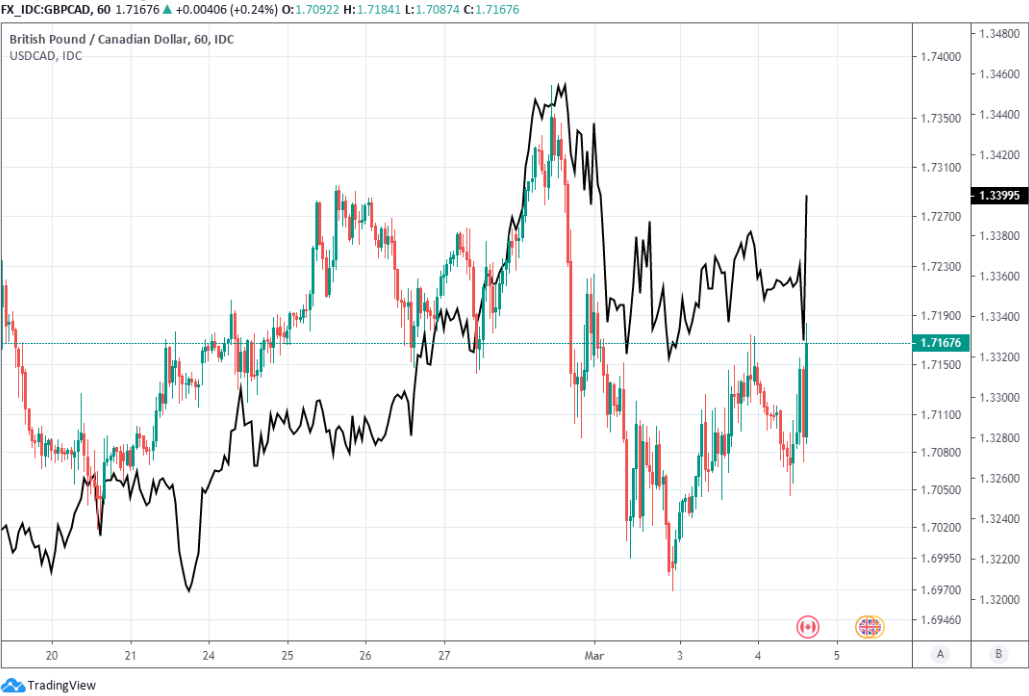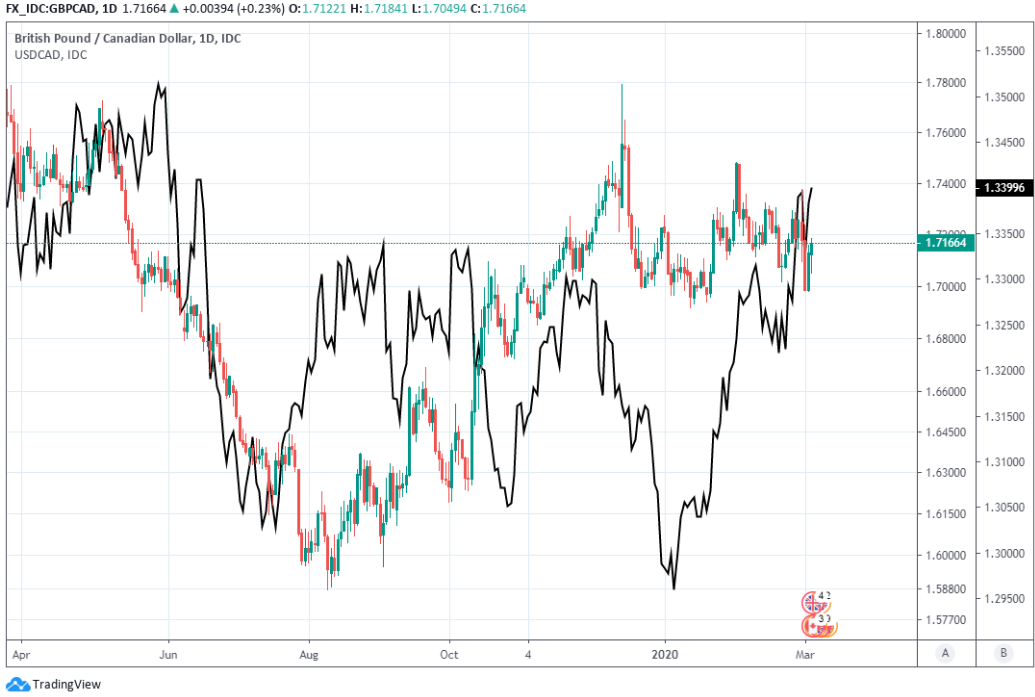The Canadian Dollar Retreats after BoC Fires Bazooka but Downside Risks Abound Still
- Written by: James Skinner
-

Image © Bank of Canada, Reproduced Under CC Licensing
- GBP/CAD Spot rate: 1.7183, up 0.20% today
- Indicative bank rates for transfers: 1.6581-1.6701
- Transfer specialist indicative rates: 1.6924-1.7027 >> Get your quote now
The Canadian Dollar retreated from the Pound and U.S. Dollar Wednesday after the Bank of Canada (BoC) took an axe to its cash rate and left the door ajar for more easing, citing coronavirus as a "material negative shock" to the economy.
Bank of Canada (BoC) policymakers opted to cut the cash rate by a rare 50 basis point increment on Wednesday, taking it down to 1.25% a day after the Federal Reserve (Fed) did the same, with both citing the threat that coronavirus could pose to national and global economies.
Market expectations were difficult to gauge heading into the meeting and more so after the Fed's rate cut on Tuesday although Canadian Dollar price action in the aftermath of the BoC's cut could be telling.
"The COVID-19 virus is a material negative shock to the Canadian and global outlooks, and monetary and fiscal authorities are responding...Governing Council stands ready to adjust monetary policy further if required to support economic growth and keep inflation on target....The Bank continues to closely monitor economic and financial conditions, in coordination with other G7 central banks and fiscal authorities," - Bank of Canada.
The Loonie had been trading higher against both the U.S. Dollar and Pound up until the announcement but beat a swift retreat once the decision to axe the cash rate became clear, indicating markets may have anticipated a smaller 25 basis point move.
"The Bank of Canada didn't wait to see the patient ailing before delivering a dose of preventative medicine, but where it goes from here is a matter of epidemiology," says Avery Shenfeld, chief economist at CIBC Capital Markets. "Like the rest of us, they will be watching for news on both the virus and the economy, but its reasonable to assume a further 25 bp cut in April, with the rest of this year's story being dependent on which virus scenario plays out."
The BoC indicated in its statement a desire to do its bit in what many speculate will be a global, monetary and fiscal policy response to the viral pneumonia that had infected more than 10,000 people outside of China as of Wednesday, and walloped commodity prices including those of oil, Canada's largest export.

Above: Pound-to-Canadian Dollar rate shown at hourly intervals alongside USD/CAD rate.
"We’ll have to wait until tomorrow unfortunately to get Stephen Poloz’s interpretation of all this. The Canadian central bank governor will be speaking at 1pmET tomorrow, with the text of his speech titled “Economic Progress Report” to be released at 12:45pmET," says Eric Bregar, head of FX strategy at Exchange Bank of Canada.
The BoC's decision comes after G7 finance ministers and central bank heads indicated on Tuesday they will use all tools to collectively support their economies, although the ommission of a unified plan of action appeared to leave investors feeling short-changed, until the Fed announced its rate cut.
Those two are the only central banks in the developed world that have scope to cut rates meaningfully and the lofty interest rates in both countries have been key to the outperformance of the two currencies in the last year, although none of this means others won't cut rates in the coming days.
The International Monetary and Financial Committee said Wednesday it's "determined to provide the necessary support to mitigate the impact, especially on the most vulnerable people and countries," before the IMF itself announced that it will make $50bn available to support the world's poorest and least developed countries as they seek to contain the coronavirus.
"Following yesterday’s decision from the Federal Reserve to cut rates 50bp, there was intensifying pressure on the Bank of Canada to follow suit and that is what they have done," says James Knightley, chief international economist at ING. "In any case, the economic outlook had been weakening even before coronavirus fears started to take hold within Canada. GDP growth had slowed to just 0.3% annualised in 4Q19 and it seems probable that 1Q20 Canadian activity was going to be depressed by supply chain disruption because of factory closures in China and other parts of Asia."

Above: Pound-to-Canadian Dollar rate shown at daily intervals alongside USD/CAD rate.
The Canadian Dollar sold off following Wednesday's decision but its status as the joint highest yielding major currency remained intact owing to the Fed's earlier cut. And given that others are also expected to cut rates up ahead, the impact on the relative return offered by the Canadian Dollar could be limited.
But a neutral impact on Canadian Dollar asset returns doesn't get the Loonie off the hook because it's still positively correlated with oil prices and stock markets, both of which could be buffeted again if and when the coronavirus spreads further in major economies and as its effect on business becomes clear.
"The marginal driver of USD/CAD has been global risk appetite. The pair rose sharply last week as a coronavirus-induced selloff in risk assets caused an expansion in USD/CAD risk premium," says Ben Randol, a strategist at BofA Global Research, who says USD/CAD could hit 1.35 soon. "Prospects for domestic and international growth have been severely undermined by the coronavirus, and recession risks have increased."
Without rapidly growing outbreaks in places like Italy, Iran and South Korea, - and signs of outbreaks building in the U.S., Japan, France, Germany and UK - the BoC's cash rate would almost certainly have been left unchanged. Investors and analysts had only slowly come to the view of late that the BoC would need to cut the cash rate soon and consensus had begun to settle on the April meeting date for a 25 basis point cut, although the possibility of more than one cut had never so much as even been discussed.
“Fears over COVID-19 disruption should continue to favour CAD underperformance. The unwinding of carry positions and narrowing of yield spreads between Canada with the rest of the world are undermining the CAD. The lower price of oil if sustained also justifies a shift to a lower equilibrium value for CAD. A move back towards the December 2018 high at 1.3665 appears to be on the cards,” says Lee Hardman, a currency analyst at MUFG.









